This male American Kestrel was such an enthusiastic poser that he performed for me for over six minutes.
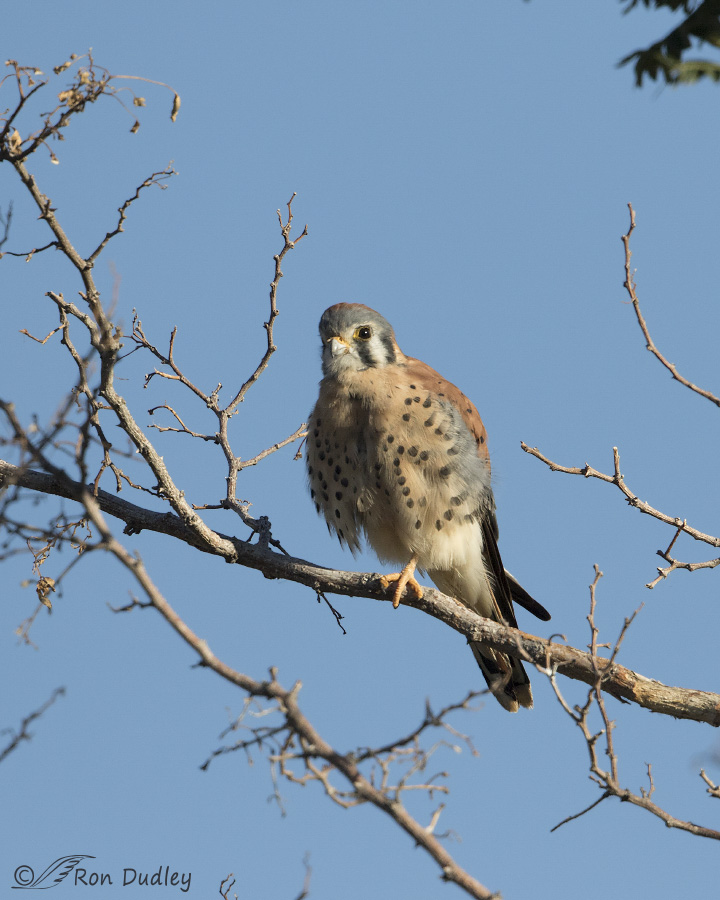
1/3200, f/6.3, ISO 500, Canon 7D Mark II, Canon EF 500mm f/4L IS II USM + 1.4 tc, not baited, set up or called in
I found him just over a month ago atop Goose Egg Island at Farmington Bay MBR. At first he was wary of me but he soon settled down enough to enjoy his morning stretching routine.
These aren’t great images. The setting is cluttered (many of these photos are cropped vertically to avoid some of that clutter) and the bird was partly side-lit. But I thought the large variety of poses from a single bird in a relatively short time held some interest.
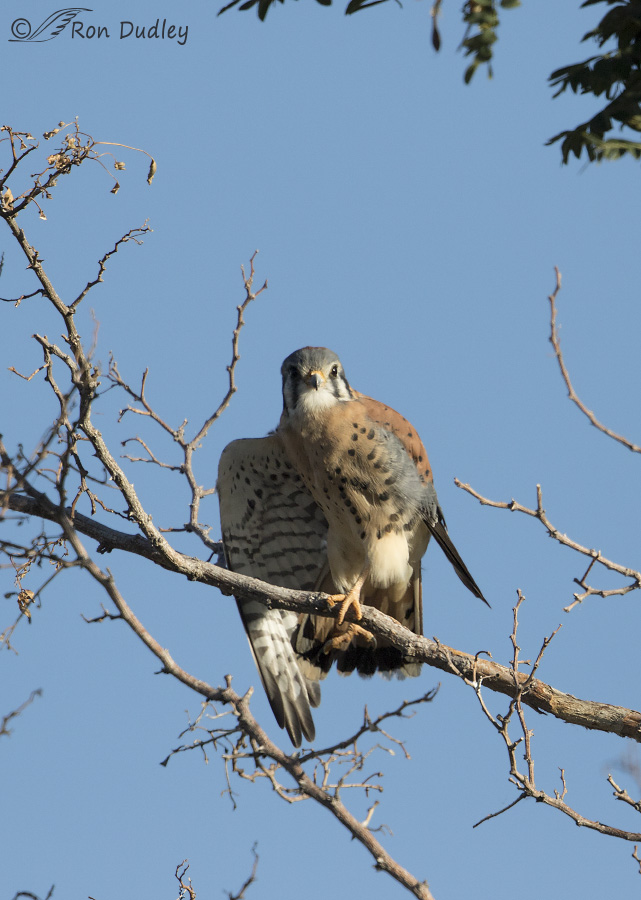
1/3200, f/6.3, ISO 500, Canon 7D Mark II, Canon EF 500mm f/4L IS II USM + 1.4 tc, not baited, set up or called in
He began his routine with a right wing stretch, though a branch on that side prevented the full extension of that wing.
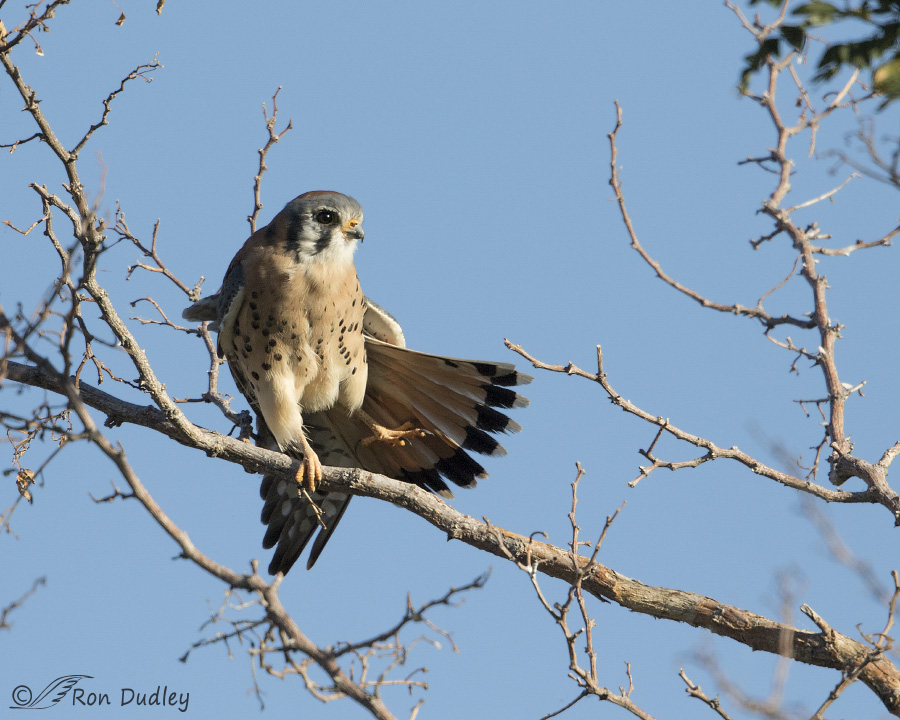
1/3200, f/6.3, ISO 500, Canon 7D Mark II, Canon EF 500mm f/4L IS II USM + 1.4 tc, not baited, set up or called in
Then he moved to the other side and stretched his left wing as he fanned his tail sideways.
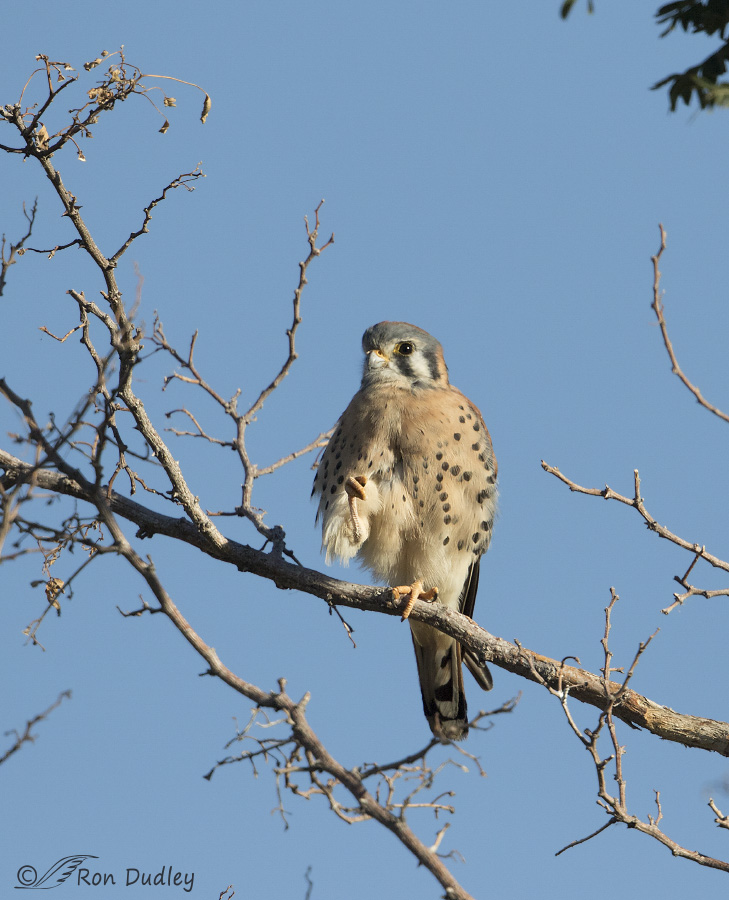
1/3200, f/6.3, ISO 500, Canon 7D Mark II, Canon EF 500mm f/4L IS II USM + 1.4 tc, not baited, set up or called in
After that he assumed this position with his right foot held up, out and clenched. This seems to be a traditional pose with many raptors though I’m not sure why they do it.
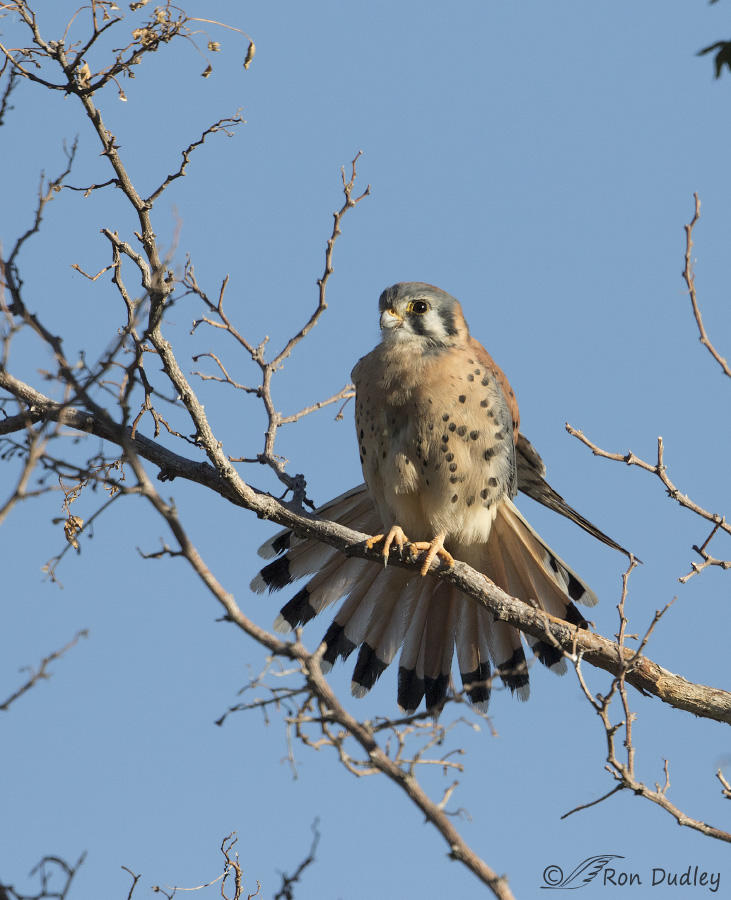
1/3200, f/6.3, ISO 500, Canon 7D Mark II, Canon EF 500mm f/4L IS II USM + 1.4 tc, not baited, set up or called in
Next came a symmetrical tail-spread. The right wing is beginning to come out…
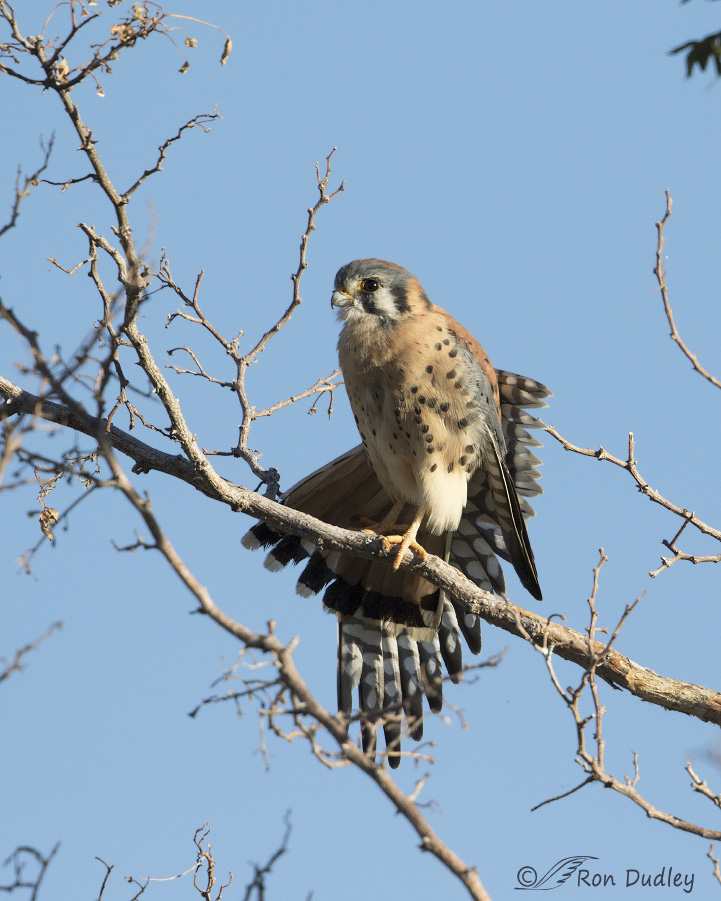
1/3200, f/6.3, ISO 500, Canon 7D Mark II, Canon EF 500mm f/4L IS II USM + 1.4 tc, not baited, set up or called in
and down.
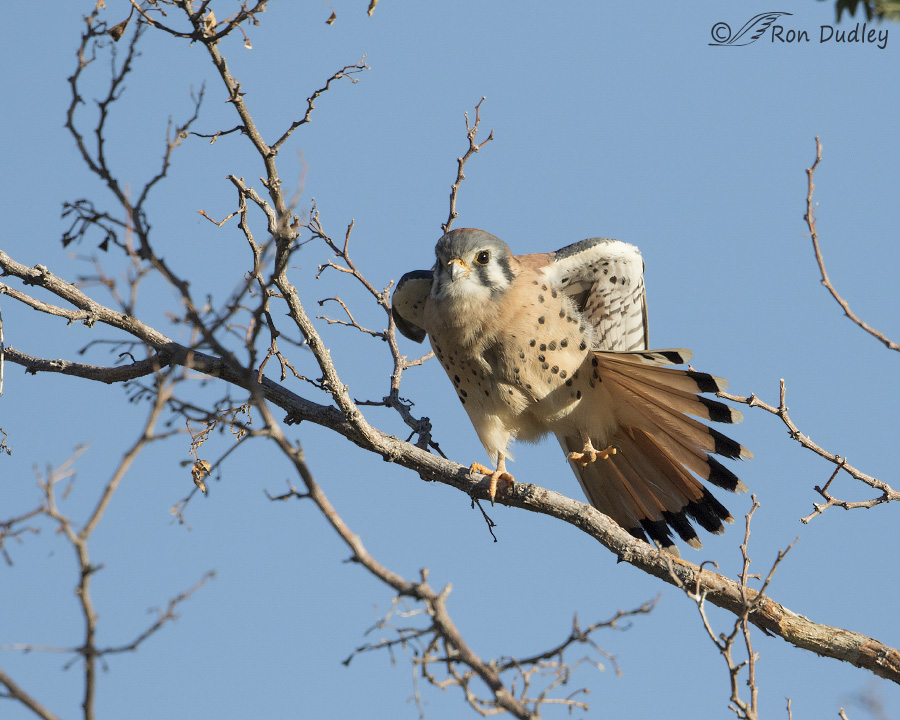
1/3200, f/6.3, ISO 500, Canon 7D Mark II, Canon EF 500mm f/4L IS II USM + 1.4 tc, not baited, set up or called in
Then he raised his left foot, fanned his tail to his left again and began to raise both wings.
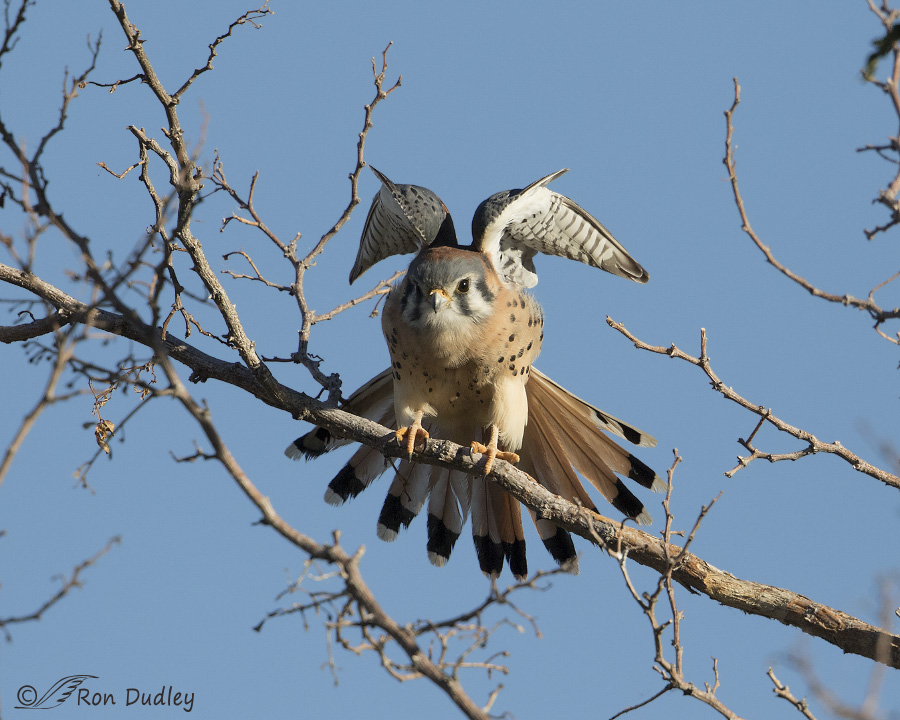
1/3200, f/6.3, ISO 500, Canon 7D Mark II, Canon EF 500mm f/4L IS II USM + 1.4 tc, not baited, set up or called in
As his tail straightened out behind him his wings came up into this pose that shows off the alulae so well. I posted this image recently to demonstrate those “bastard wings”.
At this point the little falcon spotted prey on the side of the hill and took off after it.
Addendum: Notice that in the image before this one the alulae are not visible but in this one they are, even though the wings are bent at about the same angle. This makes me think that birds actually have physical control over the alulae instead of them just reacting to air currents. I’ve read in the literature that there’s some question about whether or not they have actual control.
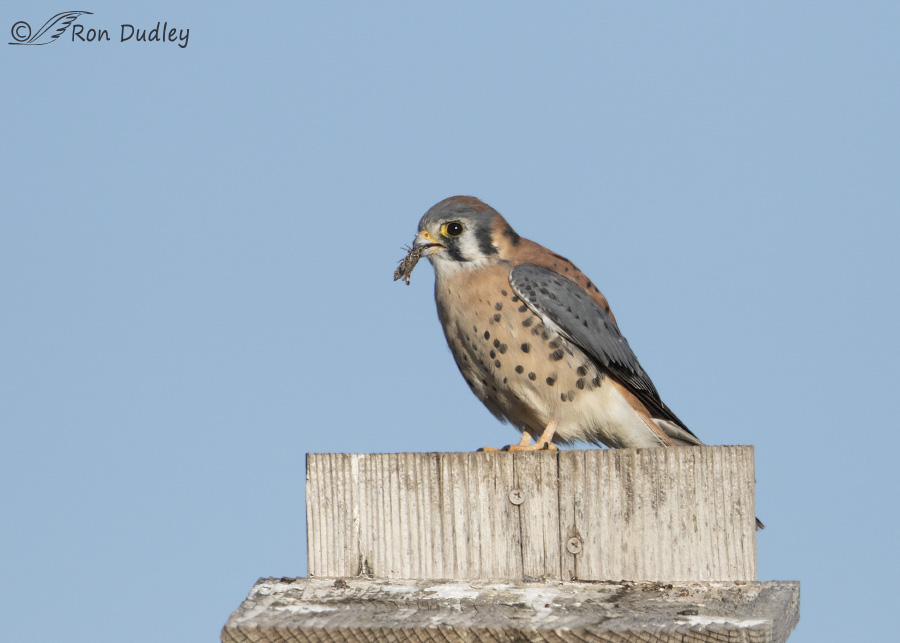
1/5000, f/6.3, ISO 500, Canon 7D Mark II, Canon EF 500mm f/4L IS II USM + 1.4 tc, not baited, set up or called in
The prey turned out to be a late-season grasshopper and he landed with it on top of a nearby kestrel box. After he consumed the grasshopper he surprised me by…
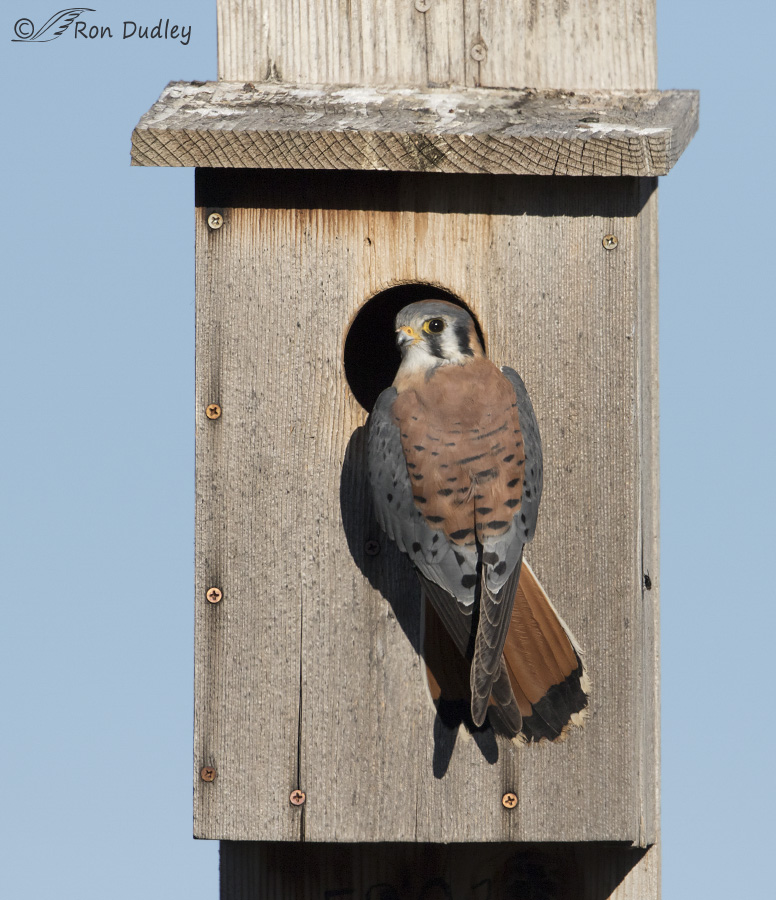
1/4000, f/6.3, ISO 500, Canon 7D Mark II, Canon EF 500mm f/4L IS II USM + 1.4 tc, not baited, set up or called in
landing at the entrance of the nest box. There were flies buzzing around (one is on the right side of the box) but he didn’t pay them any attention.
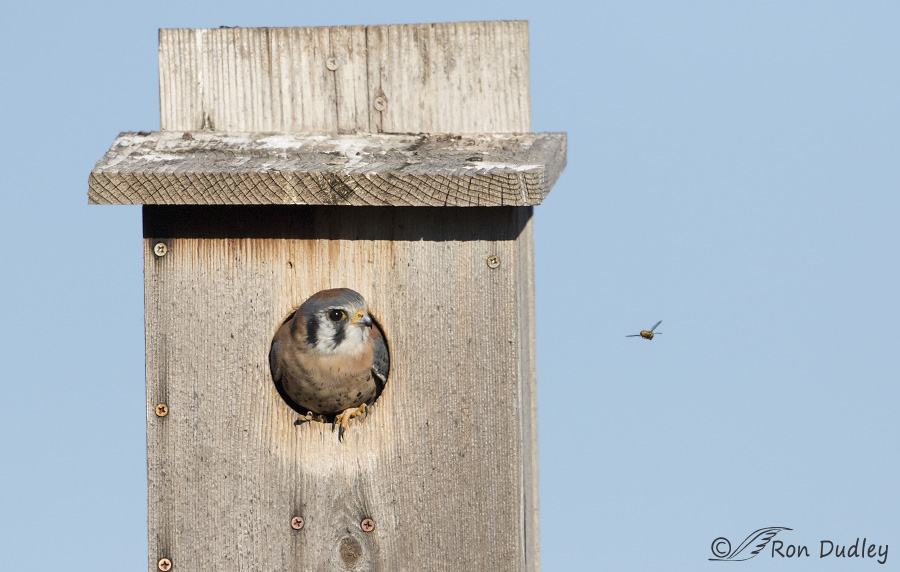
1/4000, f/7.1, ISO 500, Canon 7D Mark II, Canon EF 500mm f/4L IS II USM + 1.4 tc, not baited, set up or called in
Then he actually entered the box and snooped around inside for a while. I have no idea why he’d be interested in a nest box in late October but he definitely was.
When he was about to leave the nest box another flying insect was buzzing around him and he paid lots of attention to this one, apparently because it appeared (when I cropped in on it) to be a stinging insect and he wanted to avoid being stung. I got about a half-dozen images of the insect flying in a near-circle around the kestrel and his gaze followed it every instant it was there (unlike the flies which he ignored). I’m pretty sure most birds recognize stinging insects.
I tried to get this bird in flight as it took off but I cut off his head. Par for the course…
I wish I’d been closer to this falcon while it was in the tree and that the light angle had been better with less clutter in the setting but he performed so well and for so long for me that I thought he deserved his 15 minutes of fame and decided to feature him on today’s blog post.
Ron


Kestrels sometimes use nest boxes for roosting places in the off season. That could be why he was checking out the box. Or he may have been searching for food or checking it out for future nesting possibilities. It’s also possible that it was used previously by him during nesting season and he was checking on it.
What a cutie..Looked like he was doing the Hokey Pokey.
Ron, You may have mentioned this information in the past, but could you please share how you stabilize your camera for these shots? Tripod, monopod, car window? Thanks. Just curious. Dan
Dan, Something like 98% of my bird photography is done from my pickup, including these shots. I use a pool noodle on my window for support. I love my noodle!
Thanks for the info on your “high-tech” equipment keep up the good work!!
Ron…a pool noodle, how very do-able 🙂 Follow on question please: Do you turn image stabilization off when on the noodle? Also, I have the same lens and noticed you shoot at 6.3 and 7.1 often. Is it just sharper for you there? Great shots as always!!
Charming little guy. Do they shelter in the nest boxes? Several of the songbirds do.
Great shots, Ron, beautiful bird!
Loved this series of images–really loved them!!!
Your enthusiasm for the series means a lot, Eloise. Thank you.
Great shots Ron, Kestrals are certainly a favorite of mine and you just couldn’t do better…really looks like a model posing for you!!
I agree, Jerry – kestrels are pretty special, especially when they’re posing. Thank you.
Taxes shots to me are totally awesome! I have never been able to get a decent shot. There are absolutely sensational!
Charlotte
Thank you, Charlotte.
Big smiles from here too. What an amazing privilege to see.
Thank you -and the cooperative kestrel.
I’m amazed that he cooperated as long as he did, EC. Maybe he enjoyed being the center of attention…
Giant smile!! This guy put on quite a show for you. Perfect way to start off my day.
I’m always happy to provide a smile, Susan. Thanks.
I love these guys. 🙂
🙂
Hi Ron!
What a beautiful little show off! Love theses photo’s of one of my favorite birds! Thanks for making my day!
Our birds have not around for some time? I don’t know where they are hiding? I miss them! Here in Va.?
Hope all is getting better with Shannon? Our prayers are with her always and you Ron and the families!!! Sybill
Thank you, Sybill. We don’t have many birds around here right now either.
Most any shot that is behavioral is cluttered – which to my eye is a good thing!
These are a series of terrific shots, wonderful looks at a male Kestrel that doesn’t look at you as a distraction or threat!
Many thanks for sharing!
Good points, Dick – about cluttered behavioral shots and about the acceptance this bird had for me. Thank you.
Absolutely delightful!
Thank you, Jane.
What a great set of images capturing behavior. Kestrel Yoga followed by some fun with flying insects. Very nice Ron, thanks!
“Kestrel Yoga followed by some fun with flying insects”
Thanks, Ed. Maybe I should have used your words for my title!
I love these little guys! They really can be such show-offs and so fierce at the same time. As always Ron, fantastic storytelling 🙂
I enjoy telling stories, Jenna. My mother used to tell me that I had a lot of practice at it when I was a little kid, though she wasn’t a fan of the kind of stories I told back then…
That was fun!
Good! Glad you enjoyed the series, Patty.
That looks like FB01, one of the boxes I have been monitoring for Hawkwatch. So far no kestrels have used it, but this is encouraging!
Tana, It’s the box atop the NW side of Goose Egg Island. I wondered if it was one of the boxes that you and Mike work with.
Wonderful images!
Thanks, Len.
Cool! A great group of images, Ron
Thank you, Judy.
Raptor yoga.
Yup!